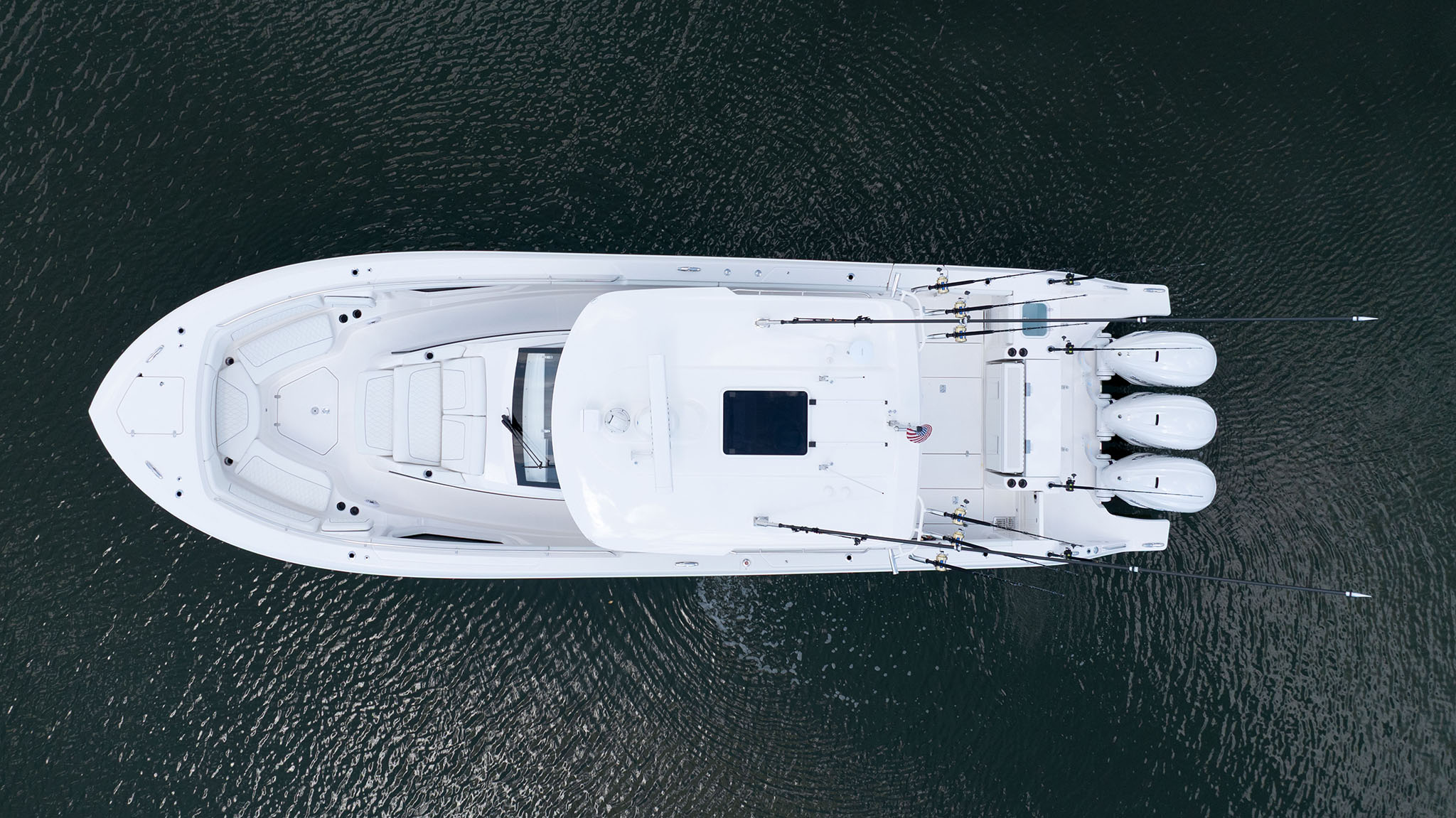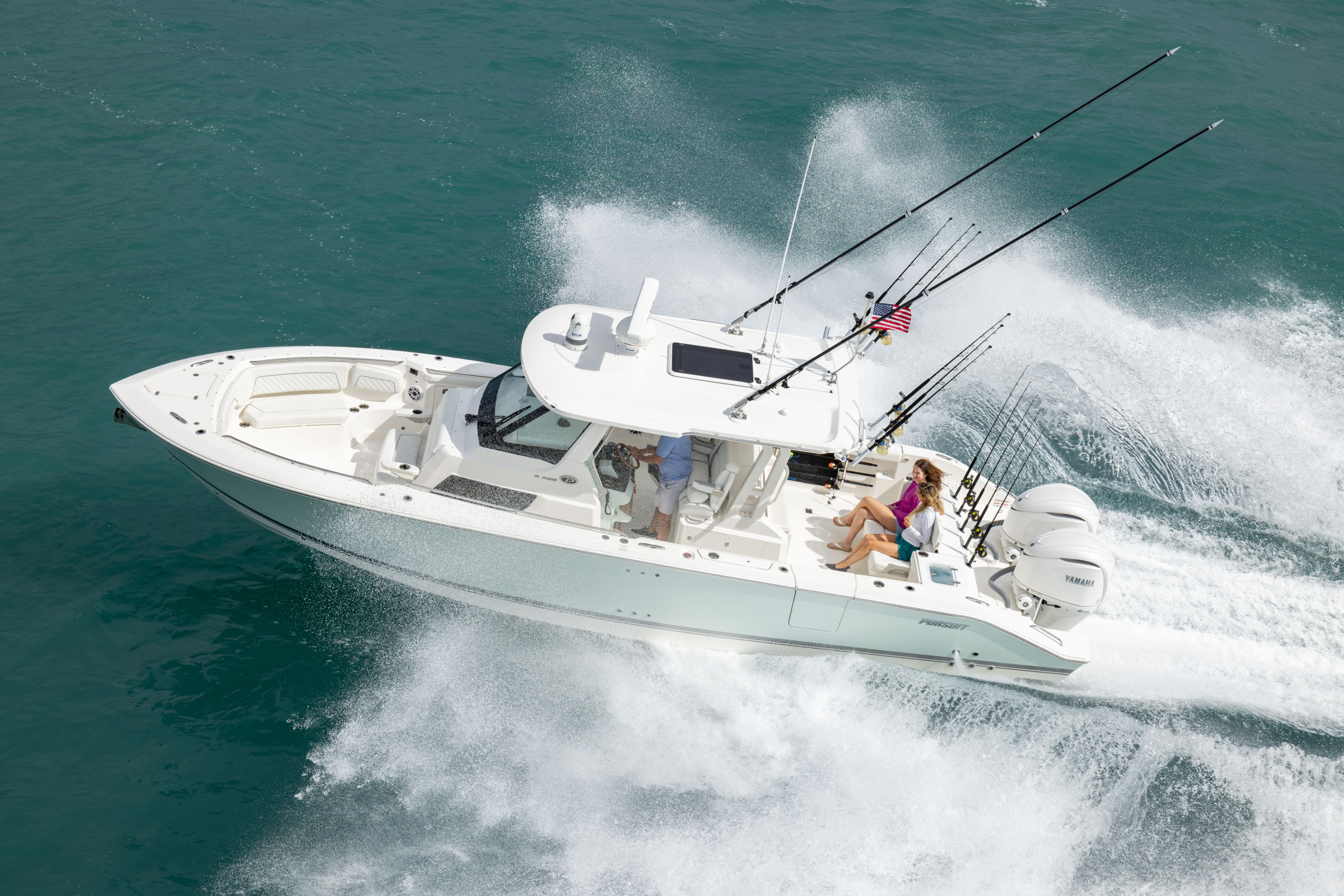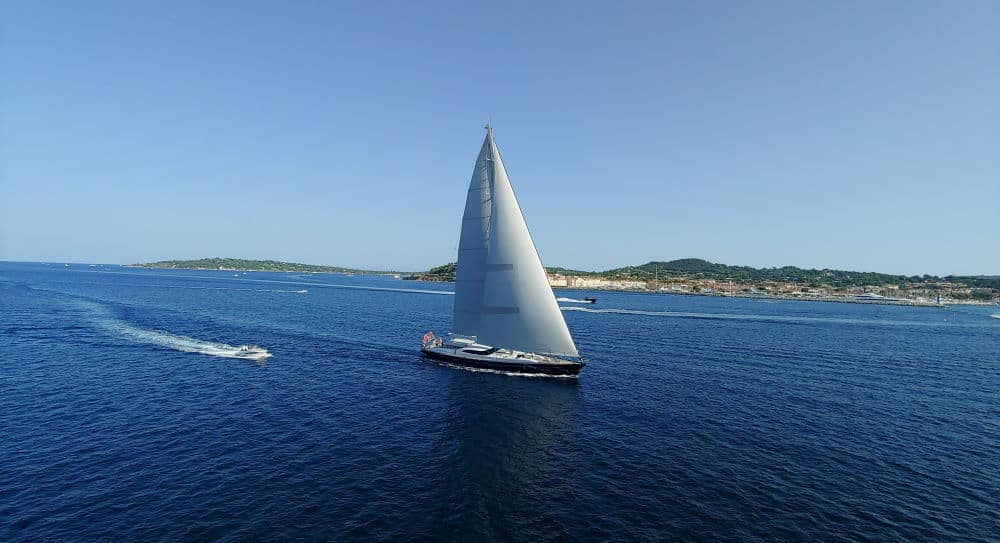Boat Terminology for Dummies

Before venturing out into open waters with your brand-new Pursuit Boat, it’s important to have a basic understanding of common boat terms associated with the positions and directions of your boat. To the uneducated ear, even the simplest of boating terms can sound like a second language. Knowing these terms will make it easier to communicate with people aboard the boat as well.
At Van Isle Marina, we want to make sure that you have the best experience possible on your boating journey. In this article, we’re sharing all the boat slang you need to know.
Before you dive in, brush up on more of the basics:
List of Common Boat Slang

Abreast: When two or more vessels are travelling side-by-side. If you’ve got a friend or the police pulling up on you, they will travel abreast.
Ballast: Weight added to the boat for extra stability. For larger ships, there may be big tanks, but on smaller boats, the ballast may just be lead bags and used more for watersports than stability.
Beam: The greatest width of the boat.
Bow: The front of the ship is called the bow. Knowing the location of the bow is important for defining two of the other most common sailing terms: port (left of the bow) and starboard (right of the bow).
Bunk (Berth): Also known as a berth, the bunk is a built-in bed on the boat.
Dinghy (or Tender): A small open boat. A dinghy is often used as a tender for a larger craft.
Draft: The depth of water a boat draws.
Fathom: A unit of measurement for the depth of the water. One fathom is equal to roughly 6 feet or 1.8 meters.
Fender: A cushion, placed between boats or between a boat and a pier, to prevent damage.
Gunwale: The top edge of your boat that runs along the length of the hull and provides structural reinforcement. Rather than how it looks, gunwale is pronounced “gun-wale”.
Head: This is the bathroom or toilet area, which got its name from its original location at the bow of a ship, allowing all matter to be washed away by waves.
Helm: This is an area where the boat is steered from. As the command centre of your craft, the helm is where you’ll find the steering wheel, throttle, communications equipment and more.
Hull: The main part of your boat. This is the watertight body with the job of providing buoyancy in the water while holding all passengers, cargo and systems.
Keel: A vital structural component of any boat that runs through the center of a craft’s bottom, acting as the backbone. Think “even keel”.
Leeward: Also known as lee, leeward is the direction opposite to the way the wind is currently blowing (windward).
Nautical Mile: A unit of measurement for distance out on the water. Based on the Earth’s longitude and latitude, one nautical mile is equal to roughly 1.85 kilometres or 6,000 feet.
Port: Port is always the left-hand side of the boat when you are facing the bow. Because “right” and “left” can become confusing sailing terms when used out in the open waters, port is used to define the left-hand side of the boat as it relates to the bow, or front.
Rudder: The movable blade at the stern of the boat used for steering. The rudder directs the flow of water and is essential for maneuvering.
Starboard: Starboard is always the right-hand side of the boat when you are facing the bow.
Stern: The back of a ship. If something is located at the stern, it is at the back of the boat. The stern is also known as the aft.
Trim: This is the running angle of your bow. When you adjust your trim, you’re changing your angle in the water, along with the speed, fuel efficiency and ride comfort.
Wake: Describes the waves created behind a boat as it tears through the water. So if you see a sign for “no-wake zone”, that means slow right down to a crawl.
Waterline: As the name suggests, this is the line on the hull of your boat that meets the surface of the water.
Weigh: A term used to describe lifting the anchor from the bottom of the water, therefore initiating movement. Once the boat is moving again, it’s considered “underway”.
Windward: The direction in which the wind is currently blowing. Windward is the opposite of leeward (the opposite direction of the wind).
Boat Lingo for Sailboat Owners
As a sailboat owner, you’re in a world with a whole other glossary of boat slang. The lingo above still applies, plus you’ve got extra slang to get familiar with.

Boom: This is the horizontal pole that holds the sail and is used to adjust its shape and angle.
Cathead: A beam projected on the bow of a sailboat used to hoist and secure your anchor. As such, the process of raising the anchor is known as “catting”.
Ease: The act of releasing tension on a sail or line by letting it out. In strong winds, you’ll want to ease the sail for better performance.
Jibing (or Gybing): This is when you maneuver the stern of your boat through the wind, which causes the boom and mainsail to swing to the other end of the boat – just like in the movies. Watch your head!
Lazy Jack: The rigging system on a sailboat made up of lines to help the mainsail fold itself onto the boom when lowered. This prevents the sail from spilling over the sides.
Mainstay: A strong rope or line that secures the mainmast to the deck of the ship. This prevents it from moving around while you’re out on the water.
Mast: The very tall vertical pole on your sailboat that supports the sails, rigging and other equipment.
Payout: Another term for adding slack to a line. This is how you reduce the tension and allow for movement.
Reefing: Reducing the sail’s area in order to lessen power in strong winds, returning you more control and stability. This is typically done by lowering the sail slightly and gathering some of it around the boom.
Sail: The large fabric structure used to propel you through the water with the help of wind. You’ll have one large mainsail, a jib used to control the bow, and perhaps a Genoa sail that overlaps the mainsail and is used for extra power.
Sheet: This is a rope or a line used to control the angle of sail based on the wind. You’ll have a mainsheet for the mainsail and jib sheets for the jib.
Tacking: Changing the direction of the bow through the wind, swapping from one side to the other.

Not ready to stop learning? Get a refresher on all the old boating superstitions. After all, it won’t hurt to be aware of all the good or bad luck you’re bringing on board.
If you’re itching to get out on the water and just need a beautiful new craft to get you there, come by Van Isle Marina in beautiful Sidney by the sea to browse our selection of new and pre-owned boats. We’ve got everything from big, beautiful sailboats to small yachts and fishing boats.
Contact us to inquire:

